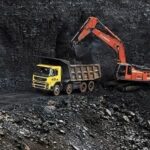Industry shifts continue to pressure energy sector specialists. Staying abreast of how the world’s changing weather conditions impact your work is vital now more than ever. One way to mitigate extreme weather fluctuations is to understand the options in energy-efficient retrofits and how they could help occupants stay safe and comfortable in times when the forecasts become increasingly unpredictable and dominated by record-breaking temperatures. What results can people get from thoughtful retrofitting projects?
Exploring the Benefits of Deep Retrofits
In one recent Canadian study, participants examined how sustainable design and innovative choices could make living spaces more energy-efficient. More than 70 professionals formed six design teams to tackle multiunit residential buildings used by older adults, people with disabilities and low-income households.
Although their primary goal was to substantially reduce energy use and carbon emissions, the groups believed they would also achieve other advantages, including better occupant well-being and climate resilience. Estimates indicated deep retrofits for these buildings caused up to a 90% reduction in energy use. Those outcomes highlight how these improvements could also make daily living affordable when many residents struggle to make ends meet.
What impact did the changes have from an emissions standpoint? The study’s data revealed they could cut emissions by 68% to 99%. In contrast, the typical reduction ranges from 3% to 55% when people’s energy-efficiency upgrades involve merely replacing systems or equipment at the end of their useful life. Deep retrofitting is a holistic process of choosing low-carbon construction materials, installing highly efficient materials and using clean energy to power the residence.
Additionally, this research resulted in numerous recommendations by its authors that energy industry professionals will find relevant. For example, introducing new standards and regulations would change minimum building performance requirements, gradually transforming existing buildings and the experiences of those who live in, own or manage them.
Moreover, the authors recommend that government decision-makers take the lead on deep retrofit projects, showing others that these changes are feasible and worthwhile. Relatedly, educating building owners on deep retrofitting benefits and making those changes more affordable would stimulate wider adoption.
Making Cold-Weather Residences More Pleasant

People living in parts of the world that frequently experience cold weather know the importance of taking meaningful action to address drafty areas in their homes. One project centered around using retrofits to achieve a similar purpose. It focused on the residences of low-income families, specifically those old enough not to meet today’s building codes but that would still be usable structures for a significant while longer.
Those involved received a $5 million Department of Energy award to get the work started. This work revolved around three substantial innovations. First, a highly insulated envelope system made the walls more airtight to improve thermal performance. Additionally, a high-efficiency mechanical pod system offered real-time monitoring for the heating, cooling, ventilation and hot water systems. Finally, the design teams used a software suite to gather building measurements to increase the accuracy of retrofit design configurations and fabricated panel placement.
These changes helped the residences retain heat in the winter and keep them cooler in the summer. Both advantages are crucial when the weather is increasingly extreme and potentially dangerous.
Although these forward-thinking changes could be important for showing energy professionals new ways of doing things, it is similarly necessary for them to incorporate well-established solutions, which means mitigating hot weather’s effects, too. For example, the sun coming through windows causes about 40% of a home’s excess heat. Installing an awning is a practical way to block many rays, stopping warmth from building up in a residence. In winter, simple solutions may mean installing blinds or blackout curtains that retain interior heat.

Highlighting Interconnectivity to Improve Energy Efficiency
Those working in the energy industry must examine how making modern buildings less resource-intensive may have far-reaching effects that the wider public might not immediately recognize. Consider an example from higher education students as they looked for links between businesses, the environment and society.
More specifically, this group saw a connection between fossil fuel dependence and the development of chronic health conditions, such as asthma and COPD. Additionally, they understood that these ailments disproportionally affect low and middle-income households. Since the average American household pays $489.35 for utilities monthly, most people appreciate savings opportunities.
The students collaborated with an energy tech company specializing in building electrification and launched real-world decarbonization and retrofitting projects in Alameda County, California, and New York City. Additionally, representatives from the energy technology company engaged health care providers, state decision-makers and insurance companies, convincing those entities to help fund these improvements.
Research and analysis were critical parts of this project, and participants discussed their work with numerous university faculty members. The compiled information and feedback resulted in a slide deck for energy technology company representatives to use when speaking with health care providers and other relevant stakeholders.
Additionally, these efforts led to the students developing three recommendations for future projects of this type. First, those involved should approach health care networks and insurers for funding, reminding those parties that energy-efficiency improvements and reducing fossil fuel dependence could keep people healthier. Moreover, people must remain mindful of local market particulars when developing their funding strategies. Then, the third point related to creating a systemic approach to engagement with the health care ecosystem.
Managing Extreme Weather’s Effects With Retrofitting
Many parts of the world have experienced extreme weather lately, and climate scientists warn they should expect more of the same. Although you cannot control the weather, these examples show how retrofitting can be a worthwhile pursuit.
Building owners or those paying utility bills will appreciate the associated cost savings. Plus, those who work or live in the upgraded structure can be more comfortable and productive when spending their time in a place that stays warmer in the winter and cooler during the hottest season.
Climate change may make seasonal patterns less familiar to some residents, including those who have lived there their entire lives. Now is the time to control what we can, which means improving our buildings to prepare them — and their occupants — for the future.





